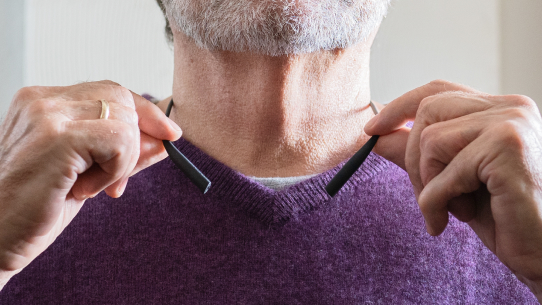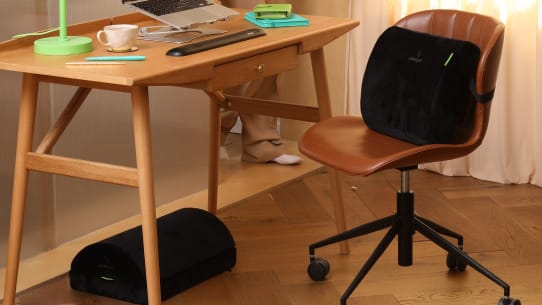How to Improve Your
Posture While You Sleeping
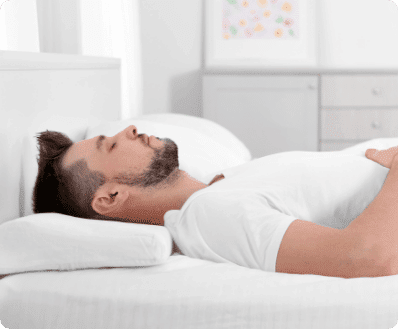
Have you ever woken up with neck or back pain and attributed it to poor sleep? It’s not necessarily a matter of sleeping wrong. Most neck and back pain stems from improper spinal alignment — aka good posture — while sleeping. And what is the best sleeping position for maintaining good posture? Most sleep experts and chiropractors agree that sleeping on your back and using only one pillow is the best way to sleep for proper posture alignment.
How Does Sleep Affect Posture?
Good posture doesn’t only involve sitting and standing, but also how we relax and sleep. Moreover, poor sleeping posture can cause back pain and muscle strain. While sleeping or resting, it’s important to maintain spinal alignment that’s conducive to the natural curvature of the lower back. The spine naturally curves in an S-shape, and it’s important to support the body along the length of this curve.
Doing this ensures that there’s no added pressure on the lower back or developed kinks. We know what you’re thinking: how can we control our bodies while we sleep? It’s a valid point, especially for those deep sleepers.
While you may doze off to sleep and lose control of your posture throughout the night, there are certain measures you can take to set yourself up for good posture while you sleep.



Tips for How to Fix Posture While Sleeping
Poor posture while sleeping can lead to disrupted sleep, increased tension, and poor circulation. This can also cause neck, back, and shoulder pain the following morning. Unfortunately, this pain can stay with us throughout the day and may even lead to chronic pain going forward. While we can’t always control what our body does while we sleep, there are some things you can do to help improve your posture while you sleep.
1. Choose a Good Mattress
There is no one-size-fits-all solution when it comes to choosing the right mattress. Just as softer mattresses don’t automatically cause back pain, firmer mattresses don’t automatically relieve back pain. As you search for the right mattress, you need one that properly supports the natural curves of your body and keeps your neck, spine, hips, and knees in alignment.
2. Choose the Right Pillow
It may seem like a fluffier pillow should ease neck aches but this is not the case. Your neck needs to stay aligned with your spine for proper sleep posture, so it shouldn’t be at an angle on a bigger, fluffier pillow. On the other hand, you don’t want your pillow to be too flat because this can also throw out your alignment.
3. Use a Knee Pillow
Knee pillows help promote proper sleeping posture by keeping your knees in line with your hips. If you sleep on your side, put the pillow between your knees to keep your knee, hip, and lower spine all in alignment. If you’re a back sleeper, you can put the pillow behind your knees to help maintain the best sleep posture.
4. Consider Sleeping with a Back Brace
Typically, a back brace or posture corrector is not meant to be used while you sleep. But on a short-term basis, these devices may help support your back and train your muscles into better sleeping positions for posture.

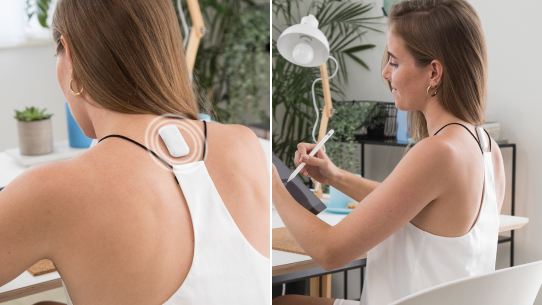
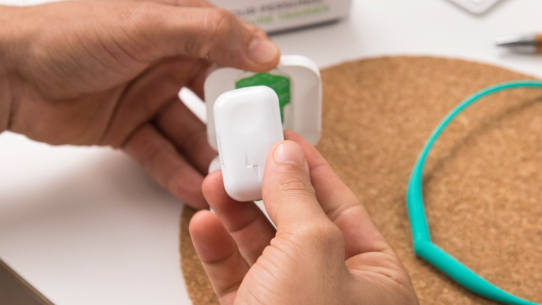
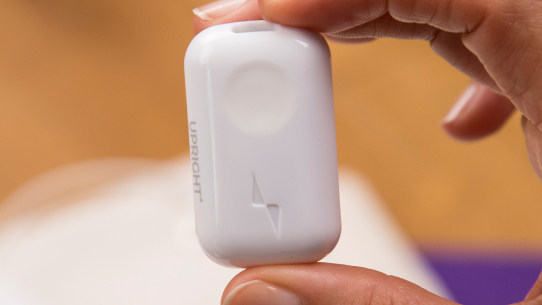



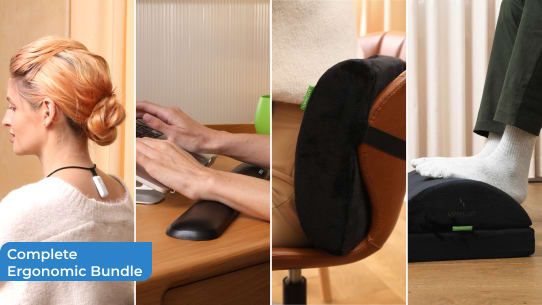
The most advanced posture trainer yet
2 built-in movement sensors
5 days of battery life
9 advanced feedback plans
Upgrade your GO 2 Experience:
Best Sleeping Positions for Your Posture
The best sleep position for posture is to sleep on your back. While you’re falling asleep, try lying on your back with a pillow or cushion beneath your knees. This positions your body to provide support to your spine, even if your bed isn’t shaped to the curve of your back. If you absolutely can’t sleep on your back, try sleeping on your side with your knees bent. You can even place a pillow between the knees to keep your hips aligned.
Avoid Sleeping on Your Stomach
It’s best to avoid sleeping on your stomach as this position can create tension in the lower back. Sleeping on your stomach puts strain on all the parts of the “s-curve” spine that needs support. With a pillow under your head, the weight adds pressure to the neck and spine. This is often the culprit of morning neck-aches.
However, a sleep study found that 17% of people prefer sleeping on their stomachs. If this is you, place a pillow under your waist to keep the spine supported. While this added support may take some time to adjust to, it will help your body in the long run.

Side Sleeping
Slide sleeping, when done right, can help keep your spine in proper alignment and relieve pressure on your back. When you sleep on your side, you want your neck, spine, hips, and knees in a straight line to prevent back pains and strains. Chiropractors find that most people who sleep on their sides are doing it incorrectly. So, if you sleep this way, you can take precautions to protect your posture.
Head Position and Pillows
No matter how you sleep, proper head and pillow position is crucial for better sleeping posture. Keep your neck in straight alignment with your spine. This means you should buy a pillow that isn’t too soft or too fluffy. The right pillow keeps your need in line with your spine regardless of what sleep position you are in.
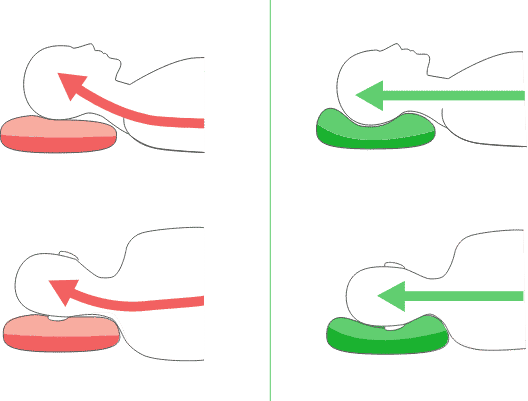
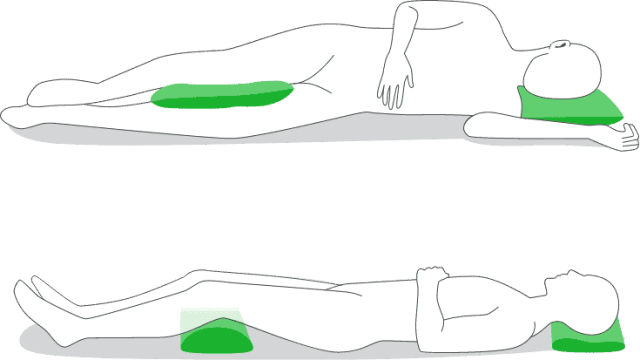
Alignment
If you’re wondering how to sleep with good posture, try to keep your body straight by thinking to align your ears, shoulders, and hips on one flat plane. Any twisting that moves either your ears, shoulders, or hips out of line with the other two is causing strain on your spine. Even when you are getting into bed, repositioning to get comfortable, or getting up in the morning, you want to keep these three spots in line. If you concentrate on moving the trunk of your body as one unit instead of twisting, you will better support your posture needs.
Ultimately, you’ll want to sleep either on your side or back with the spine aligned straight. Each one of these options are healthy sleeping positions that will gently support the natural curvature of the spine.
Additional Sleeping Positions
The fact is, sleeping posture matters. Of course, we can make a cognitive effort to maintain an upright posture during the day, but what happens to our posture when we’re snoozing? Furthermore, are there healthy sleeping positions? Or ways to sleep that are better than others? The answer is yes, and the way we sleep influences our posture.

Fetal Position
This is a sleeping position where you sleep on your side and pull your knees up toward your chest. Try to avoid sleeping in the fetal position, as this can add unwanted stress to the spine. When on your side, keep the knees slightly bent without pulling them up toward the chest. If you must bring your knees forward, keep the bend of your knees lower than hip level.

Spooning Position
This sleep position is usually used by couples where the people lay back-to-chest and cuddle to fall asleep. Spooning is similar to side sleeping but the addition of another person can affect your sleeping posture. If you choose to spoon as you sleep, make sure you are maintaining body alignment by having a good pillow under your neck, a firm pillow between your knees, and that your arms are relaxed if they are draped over your partner.
Maintain Good Posture Day and Night
Better posture while you sleep will increase the effectiveness of your sleep. Getting good sleep is vital to daily health and well-being. Now that you know the best sleeping position for posture, you can sleep soundly knowing your body is healthy and happy.
Combine good sleeping posture with the daily posture training sessions to invite the incredible benefits of good posture. Daily training sessions with UPRIGHT can quickly improve posture and create long-term health benefits. Improving everyday posture can teach your body the correct positions to maintain, and this muscle memory will transfer to your sleeping habits as well. To summarize: sleep right and stay upright to maintain good posture day and night.



